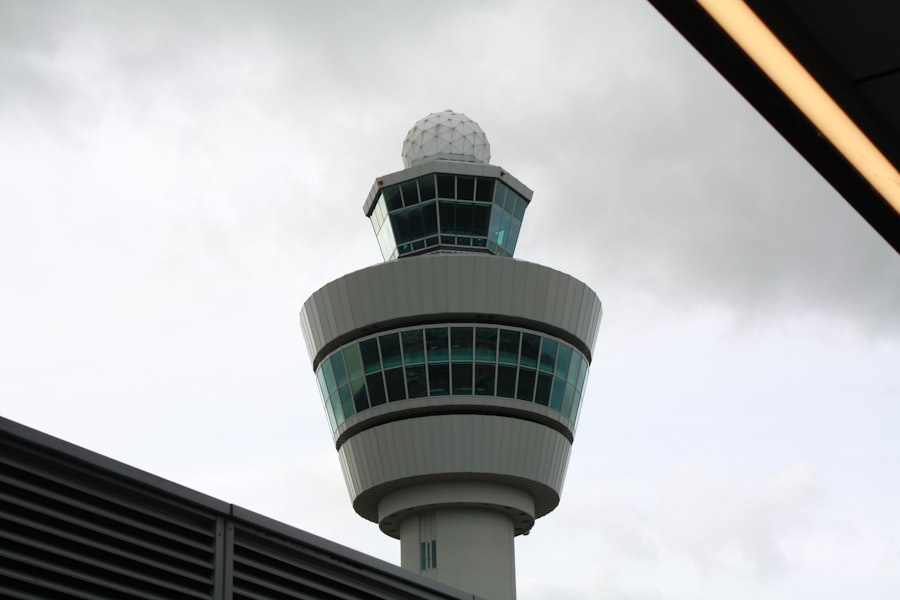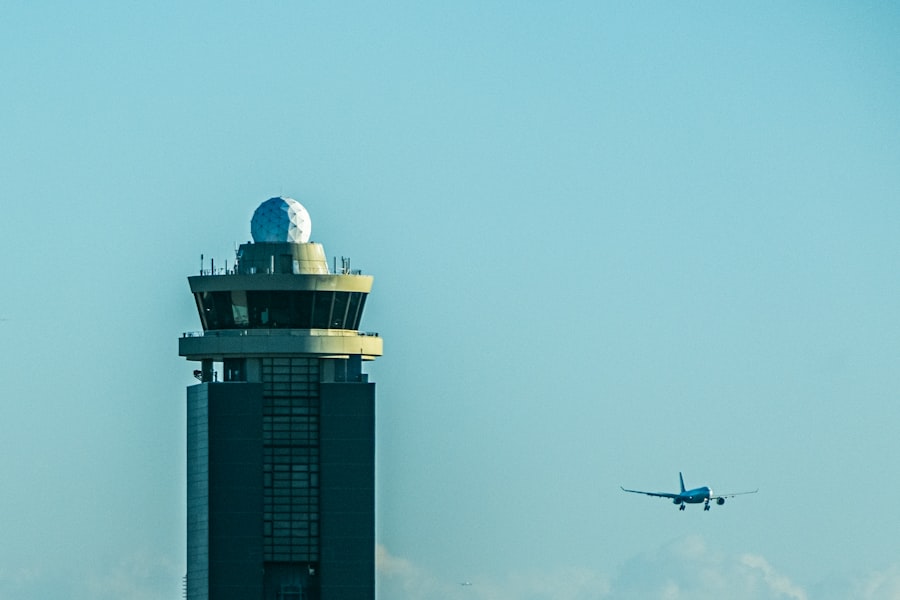Air traffic organization is a critical component of the aviation industry, encompassing the systems, processes, and personnel responsible for managing the safe and efficient movement of aircraft in the skies and on the ground. This intricate web of operations ensures that millions of flights occur annually without incident, facilitating global connectivity and commerce. The organization of air traffic is not merely about directing planes; it involves a complex interplay of technology, human expertise, regulatory frameworks, and international cooperation.
As air travel continues to grow, the need for a robust air traffic organization becomes increasingly paramount. The foundation of air traffic organization lies in its ability to coordinate various stakeholders, including airlines, airports, regulatory bodies, and air traffic control (ATC) agencies. Each entity plays a vital role in maintaining safety and efficiency within the airspace system.
The evolution of air traffic management has been shaped by advancements in technology, changes in regulatory policies, and the growing demand for air travel. As we delve deeper into the intricacies of air traffic organization, it becomes evident that its significance extends beyond mere logistics; it is a vital element of modern infrastructure that supports economic growth and societal connectivity.
Key Takeaways
- Air Traffic Organization plays a crucial role in managing and controlling air traffic to ensure safety and efficiency.
- Efficient air traffic organization is important for minimizing delays, reducing fuel consumption, and lowering operational costs for airlines.
- Air traffic control systems and technologies, such as radar and satellite-based navigation, are essential for managing and monitoring air traffic.
- Airspace management and optimization are key factors in maximizing the capacity and efficiency of air traffic organization.
- Collaborative decision making among stakeholders, including airlines, air traffic control, and airports, is essential for effective air traffic organization.
Importance of Efficient Air Traffic Organization
Efficient air traffic organization is essential for several reasons, primarily centered around safety, economic impact, and environmental sustainability. Safety is the foremost priority in aviation; an efficient air traffic system minimizes the risk of accidents and incidents by ensuring that aircraft are adequately separated in both altitude and lateral distance. This is achieved through meticulous planning and real-time monitoring by air traffic controllers who utilize advanced radar systems and communication technologies to track aircraft movements.
The ability to respond swiftly to changing conditions—such as weather disruptions or emergencies—further underscores the importance of an organized approach to air traffic management. From an economic perspective, efficient air traffic organization directly influences the profitability of airlines and the overall health of the aviation sector. Delays and inefficiencies can lead to increased operational costs for airlines, which may ultimately be passed on to consumers through higher ticket prices.
Moreover, a well-organized air traffic system enhances the capacity of airports and airspace, allowing for more flights to operate concurrently without compromising safety. This increased capacity can stimulate economic growth by facilitating trade and tourism, thereby creating jobs and generating revenue for local economies. The ripple effect of efficient air traffic organization extends beyond aviation; it impacts various sectors reliant on timely transportation of goods and people.
Air Traffic Control Systems and Technologies

The backbone of air traffic organization lies in sophisticated control systems and technologies designed to manage aircraft movements effectively. Traditional radar systems have been complemented by satellite-based technologies such as Automatic Dependent Surveillance–Broadcast (ADS-B), which provides real-time information about an aircraft’s position, velocity, and intent. This technology enhances situational awareness for both pilots and air traffic controllers, allowing for more precise tracking of aircraft even in remote areas where radar coverage may be limited.
In addition to surveillance technologies, communication systems play a crucial role in air traffic control. The implementation of Data Link Communication Systems allows for the exchange of information between pilots and controllers without relying solely on voice communication. This reduces congestion on radio frequencies and minimizes misunderstandings that can arise from miscommunication.
Furthermore, advanced decision support tools assist controllers in managing traffic flows by predicting potential conflicts and suggesting optimal flight paths. These innovations not only improve safety but also enhance operational efficiency by enabling more dynamic responses to changing conditions.
Airspace Management and Optimization
| Metrics | Data |
|---|---|
| Number of Airspace Restrictions | 125 |
| Percentage of Airspace Utilization | 78% |
| Number of Air Traffic Delays | 320 |
| Percentage of Airspace Optimization | 65% |
Airspace management is a fundamental aspect of air traffic organization that involves the strategic allocation of airspace resources to maximize efficiency while ensuring safety. The complexity of modern airspace requires a comprehensive understanding of various factors, including flight patterns, weather conditions, and the capabilities of different aircraft types. Effective airspace management involves creating structured flight routes that minimize congestion while accommodating the diverse needs of commercial airlines, cargo operators, and general aviation.
One approach to optimizing airspace is the implementation of Performance-Based Navigation (PBN) procedures, which utilize satellite technology to create more direct flight paths. By allowing aircraft to fly more efficiently from point A to point B, PBN reduces fuel consumption and emissions while also decreasing flight times. Additionally, dynamic airspace management techniques enable real-time adjustments to flight routes based on current traffic conditions or weather events.
This flexibility is essential in maintaining an organized flow of air traffic, particularly during peak travel periods or adverse weather situations.
Collaborative Decision Making in Air Traffic Organization
Collaborative decision-making (CDM) is an essential process within air traffic organization that fosters cooperation among various stakeholders involved in aviation operations. By sharing information and insights across different entities—such as airlines, airports, and ATC agencies—CDM enhances situational awareness and enables more informed decision-making. This collaborative approach is particularly beneficial during times of disruption, such as severe weather events or technical failures, where coordinated responses can mitigate delays and improve overall efficiency.
The implementation of CDM practices has led to significant improvements in operational performance. For instance, when airlines share their planned flight schedules with ATC agencies in advance, controllers can better anticipate traffic flows and allocate resources accordingly. Similarly, real-time data sharing allows for quicker adjustments to flight plans based on changing conditions.
The integration of CDM into daily operations not only enhances safety but also fosters a culture of transparency and trust among stakeholders, ultimately leading to a more resilient air traffic system.
Integration of Unmanned Aerial Vehicles (UAVs) in Air Traffic Organization

The rise of unmanned aerial vehicles (UAVs), commonly known as drones, presents both opportunities and challenges for air traffic organization. As UAV technology advances and their applications expand—from delivery services to agricultural monitoring—the need for effective integration into existing airspace systems becomes increasingly critical. Unlike traditional aircraft, UAVs often operate at lower altitudes and can be deployed in a variety of environments, necessitating new frameworks for regulation and management.
To accommodate UAVs within controlled airspace while ensuring safety for all users, regulatory bodies are developing specific guidelines and technologies tailored to their unique operational characteristics. For instance, the Federal Aviation Administration (FAA) has initiated programs such as Remote Identification (Remote ID), which allows for tracking UAVs in real-time similar to manned aircraft. Additionally, concepts like UTM (Unmanned Traffic Management) are being explored to create dedicated systems for managing UAV operations without compromising the safety or efficiency of traditional air traffic.
Environmental Considerations in Air Traffic Organization
As global awareness of environmental issues grows, the aviation industry faces increasing pressure to reduce its carbon footprint and minimize its impact on climate change. Air traffic organization plays a pivotal role in this endeavor by implementing strategies aimed at enhancing fuel efficiency and reducing emissions. One significant approach is optimizing flight routes through advanced navigation technologies that allow aircraft to fly more direct paths while avoiding congested areas.
Moreover, initiatives such as Continuous Descent Approaches (CDA) enable aircraft to descend gradually rather than following traditional step-down approaches that require increased engine power and fuel consumption. By adopting these environmentally friendly practices within air traffic management systems, the aviation industry can contribute to broader sustainability goals while maintaining operational efficiency. Additionally, collaboration with stakeholders across various sectors—including government agencies, environmental organizations, and industry leaders—is essential for developing comprehensive strategies that address both operational needs and environmental concerns.
Future Trends and Challenges in Air Traffic Organization
Looking ahead, several trends are poised to shape the future of air traffic organization while presenting unique challenges that must be addressed. One prominent trend is the increasing reliance on automation within air traffic control systems. As artificial intelligence (AI) and machine learning technologies advance, there is potential for automated systems to assist or even replace human controllers in certain tasks.
While this could enhance efficiency and reduce human error, it also raises questions about safety, accountability, and the need for human oversight in critical decision-making processes. Another significant challenge lies in managing the anticipated growth in global air travel demand over the coming decades. With projections indicating a doubling of passenger numbers by 2040, existing infrastructure may struggle to accommodate this surge without significant investment in modernization efforts.
This necessitates not only technological advancements but also innovative approaches to collaboration among stakeholders to ensure that capacity meets demand without compromising safety or efficiency. In conclusion, the future landscape of air traffic organization will be shaped by technological advancements, evolving regulatory frameworks, and a growing emphasis on sustainability. As the industry navigates these changes, it will be essential to maintain a focus on safety while embracing innovation to create a more efficient and resilient air traffic system capable of meeting the demands of tomorrow’s aviation landscape.


